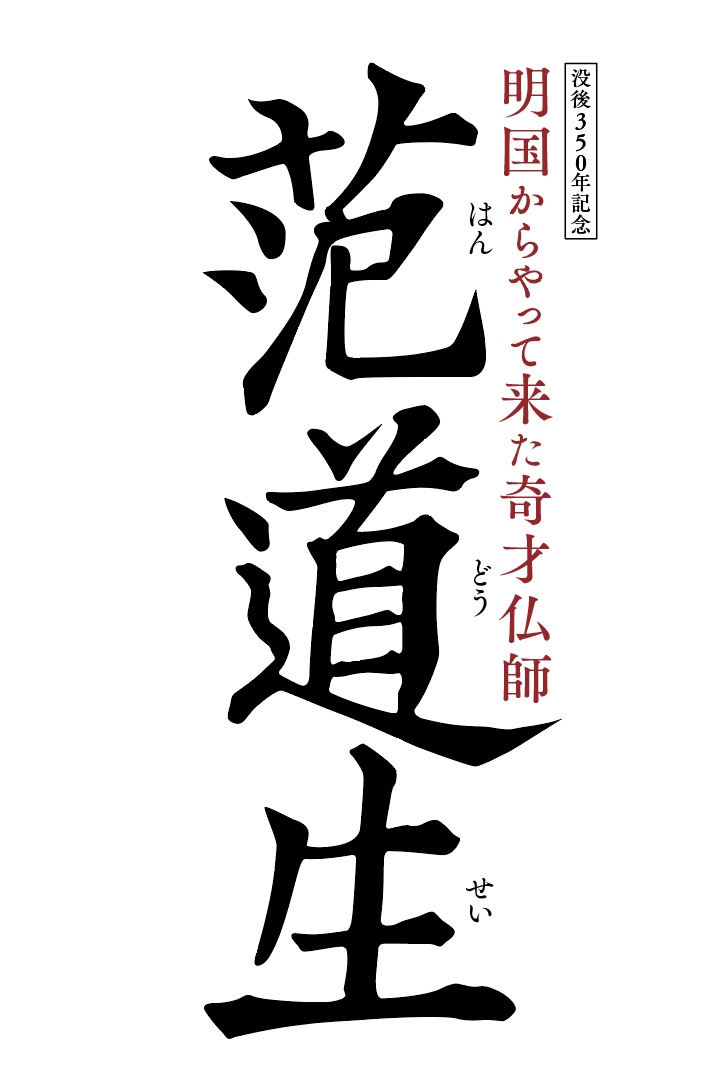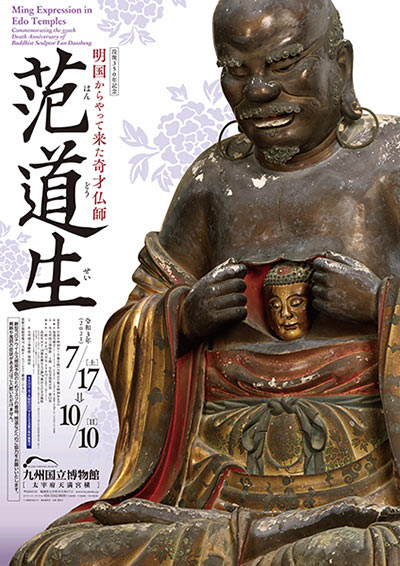Feature Exhibition:
Ming Expression in Edo Temples
Commemorating the 350th Death Anniversary of Buddhist Sculptor Fan Daosheng
Exhibition period:
17 July 2021 (Sat) – 10 October 2021 (Sun)
Venue:
Cultural Exchange Exhibition Hall, Room 11
Introduction:
Fan Daosheng (1635–70) was a sculptor of Buddhist statues from Fujian, China. During the early Edo period (17th–19th century), he made his way to Nagasaki, Japan, where he worked at the Fukusaiji and Kōfukuji temples. He was subsequently invited to work as a sculptor at the Manpukuji Temple in Uji, Kyoto by none other than its founder, Yinyuan Longqi, the monk who had also established the Ōbaku Zen sect of Buddhism in Japan. As the Ōbaku sect gained traction in Japan, Fan’s sculptures at Manpukuji, and the late-Ming Chinese style of Buddhist sculpture that they embodied, also garnered considerable popularity among Zen temples in Japan. In this way, Fan’s unique works left their mark on Japanese Buddhist sculpture history. In commemoration of the 350th anniversary of Fan’s death in 2020, we have put together this exhibition to celebrate Fan’s works, including but not limited to his sculptures, paintings, and writings.
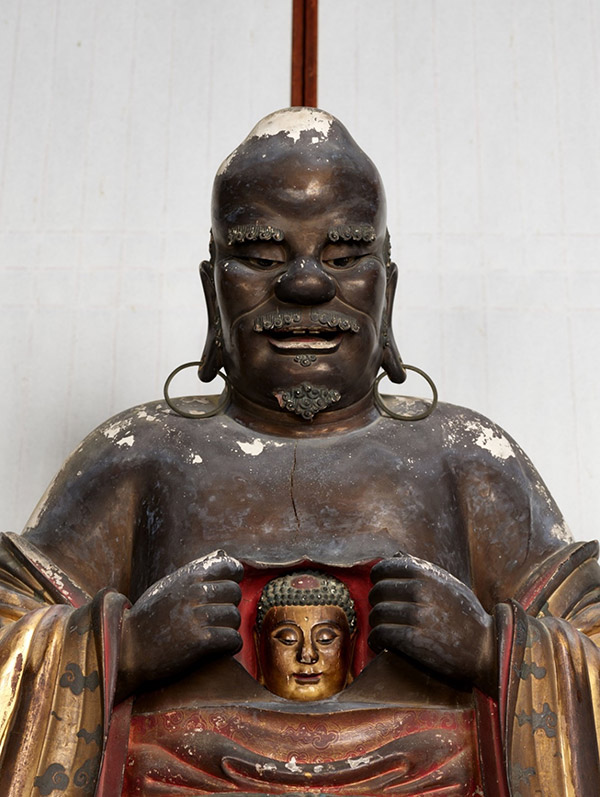
Arhat Rahula (from the Eighteen Arhats)
By Fan Daosheng
Dated 1664
Manpukuji Temple, Kyoto
The Eighteen Arhats were the original followers of the Buddha who had attained enlightenment, and had sworn to protect his teachings. The arhat here, Rahula, was Buddha’s son from before he had entered priesthood. Rahula is seen here prying open his chest to reveal the Buddha’s face, a gesture signifying how everyone has the Buddha nature in them, and thus the potential to be enlightened. This series of statues is one of Fan’s most iconic works.
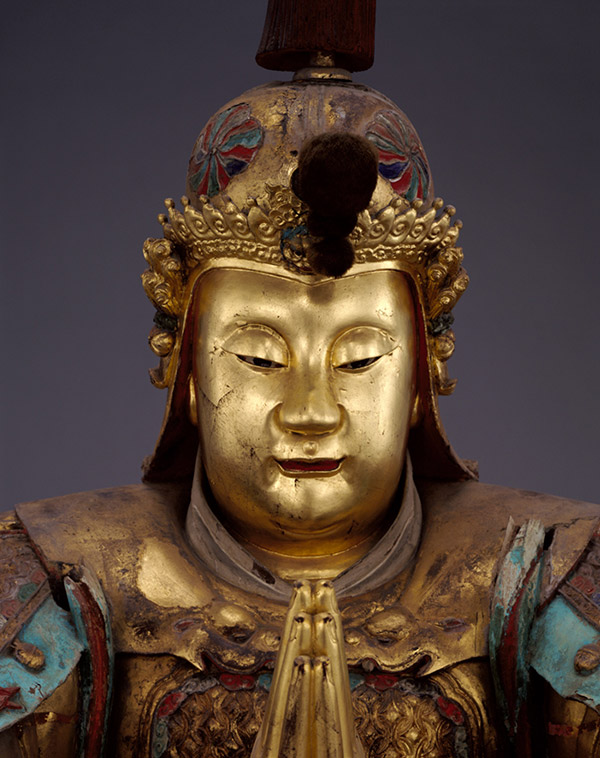
Skanda
By Fan Daosheng
Dated 1663
Kōfukuji Temple, Nagasaki
Kōfukuji is the oldest Chinese-style temple in Nagasaki. It functioned as a gathering place for Chinese Buddhists, including Yinyuan, who joined the temple in 1654 and later founded the Ōbaku sect of Zen Buddhism in Japan. After a temple fire in 1663, the monks leading Kōfukuji’s reconstruction charged Fan with remaking its Buddhist statues. This statue is one of Fan’s works at that time.

The Three Great Imperial Officials
By Fan Daosheng
Dated 1663
Kōfukuji Temple, Nagasaki
These statues are currently enshrined in the Mazu Hall at Kōfukuji. In Taoism, the Three Great Imperial Officials refer to three deities: the Heavenly Official, the Earth Official, and the Water Official. They administer phenomena in their respective domains. People believed that the Heavenly Official endows people with happiness, the Earth Official grants amnesty to the sinful, and the Water Official helps get rid of one’s back luck.
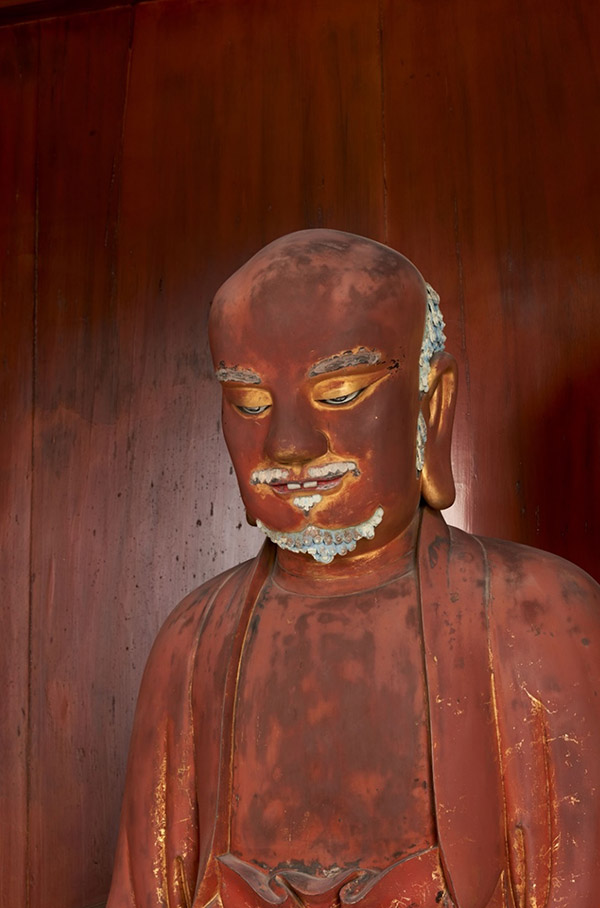
Bodhidharma
By Fan Daosheng
Dated 1662
Manpukuji Temple, Kyoto
This statue of Bodhiharma, the founder of Chan (Jp. Zen) Buddhism in China, is one of the lacquered statues Fan made for Chinese monk Yinyuan Longqi in 1662. Fan had yet to move to Kyoto at the time, so he made these statues in Nagasaki first and had them delivered to Kyoto.
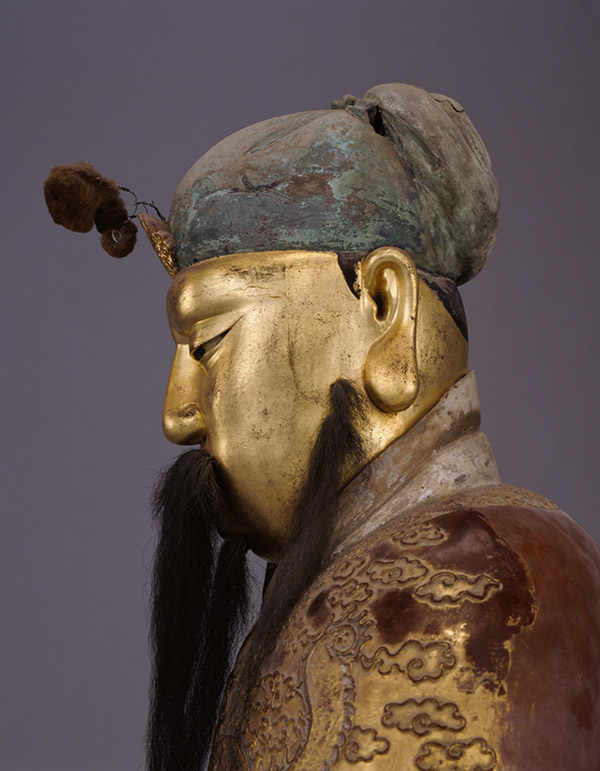
Guandi
By Fan Daosheng
Dated 1663
Kōfukuji Temple, Nagasaki
Guan Yu was a Chinese general celebrated for his brave deeds in the Sanguozhi, a historical record of the Three Kingdoms in the late Han dynasty (25–220). After his death, he was lionized as Guandi, a god of war, and worshipped as a guardian god at Buddhist temples from the Tang dynasty onward. This statue of Guandi, flanked by Guan Ping (left) and Zhou Cang (right), is one of Fan’s masterpieces. It is currently enshrined at the Mazu Hall of Kōfukuji.

Amitabha Triad, with inscriptions in blood
By Fan Daosheng and Boyan Xingjie
Dated 1664
Hōrin’in Temple, Kyoto
According to the inscriptions on this work, the Chinese priest Hechan Daohe had offered his own blood as ink for another Chinese priest, Boyan Xingjie, to inscribe the Amitabha Sutra, and for Fan to paint the Amitabha triad.

Guandi
By Fan Daosheng, inscription by Muan Xingtao
Inscription dated 1664
Shōfukuji Temple, Nagasaki
This painting of Guandi depicts him with slit eyes, thick eyebrows, and a long beard—features that the Chinese general Guan Yu is often described with in legends. Guan Yu’s subordinate, Zhou Cang, stands to his right holding his master’s favored weapon, a glaive named “Qinglong Yanyue Dao” (lit., Green Dragon Crescent Blade). Note the fine details in the figures’ beards and the motifs on their clothing.

Kakō Bosatsu (temple guardian deity)
By Fan Daosheng
Dated 1664–5
Fukujuji Temple, Fukuoka
Huaguang (Jp. Kakō) was originally a Taoist deity, but became revered as the bodhisattva Kakō Bosatsu by Ōbaku followers. His most distinguishing feature is the set of three eyes on his forehead. As Kakō is worshipped as the guardian of temples, statues of him are quite common in temples; paintings of him, however, are few and far between.

“First Visit to Ōbaku”
By Fan Daosheng
1663–4
Manpukuji Temple, Kyoto
This is Fan’s original handwritten manuscript of a poem. At the invitation of Yinyuan, Fan visited Kyoto’s Manpukuji for the first time in 1663. From the contents of the poem, it would seem that he had enjoyed the trip.

The Eighteen Arhats
By Fan Daosheng, title and foreword by Yinyuan Longqi, inscription by Muan Xingtao, afterword by
Gaoquan Xingdun
Inscription and afterword dated 1675
Kōgetsuji Temple, Fukuoka
After leaving Manpukuji, Fan visited Quang Nam Province in Vietnam. From there, he had sent this painting of the Eighteen Arhats to the monks at Manpukuji. A vivid depiction of the Eighteen Arhats statues he had previously created for Manpukuji, it became Fan’s last piece of work.
